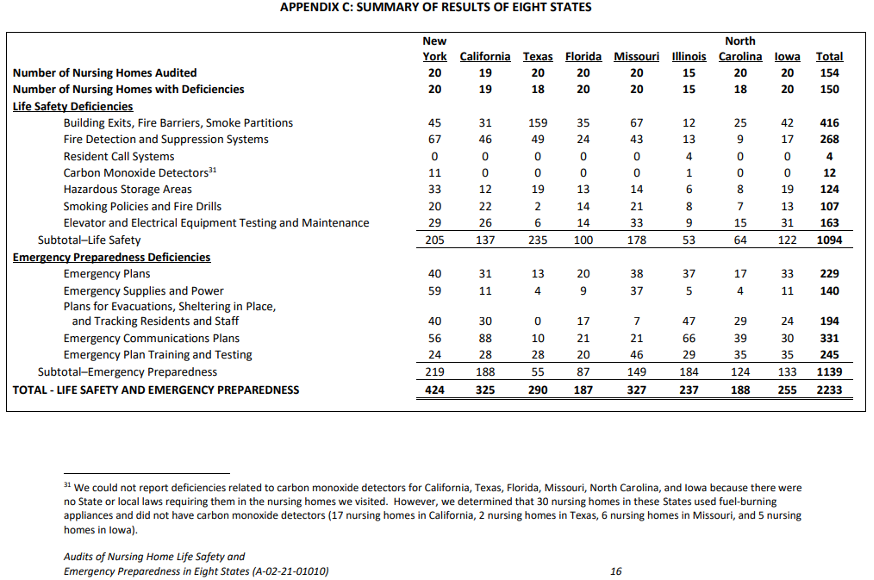Mary Madison, RN, RAC-CT, CDP
Clinical Consultant – Briggs Healthcare

“In 2016, the Centers for Medicare & Medicaid Services (CMS) updated its life safety and emergency preparedness regulations to improve protections for all Medicare and Medicaid beneficiaries, including those residing in nursing homes. These updates expanded requirements related to sprinkler systems and smoke detector coverage. Emergency preparedness planning requirements were also expanded.
As part of our oversight activities, OIG is reviewing this area because many residents of nursing homes have limited or no mobility and are particularly vulnerable in the event of a fire or other emergency. Beginning in 2018, we conducted a series of audits in eight States to assess compliance with CMS’s new life safety and emergency preparedness requirements.

(OIG) objective was to summarize the results of our previous audits of eight States’ compliance with CMS’s life safety and emergency preparedness requirements for nursing homes and to identify opportunities for CMS to improve resident, visitor, and staff safety.
(OIG) identified a total of 2,233 areas of noncompliance with life safety and emergency preparedness requirements at 150 of the 154 nursing homes we visited. Specifically, (OIG) identified 1,094 areas of noncompliance with life safety requirements and 1,139 areas of noncompliance with emergency preparedness requirements. These deficiencies occurred because of several factors, including inadequate oversight by management, staff turnover, inadequate oversight by State survey agencies, and a lack of any requirement for mandatory participation in standardized life safety training programs. As a result, residents, visitors, and staff at the nursing homes were at increased risk of injury or death during a fire or other emergency. CMS subsequently followed up with State survey agencies to determine if they had addressed the recommendations included in our prior audits and, according to CMS, the States had already taken acceptable actions to address our recommendations.
(OIG) identified several opportunities for CMS to expand on its life safety requirements for nursing homes to improve the safety of residents, visitors, and staff. Among other findings, CMS could propose regulations requiring nursing homes to install carbon monoxide detectors according to national standards. (OIG) also noted areas in which CMS could improve its support for State survey operations and nursing home training. CMS could work with State survey agencies to address issues preventing more frequent surveys of high-risk facilities and require mandatory participation in standardized nursing home staff training.”
This OIG report was posted July 15, 2022. The Report in Brief is found here; the 25-page Complete Report is found here.

This table on page 21 of the Complete Report provides links to the specific state reports:


The above chart provides the summary of the audit results in the 8 states.
I encourage you to review this report with your team and colleagues. What does your facility look like in these critical areas?
